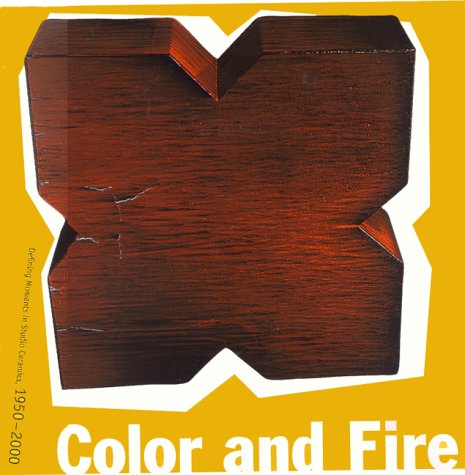Drawn from the collection of the Los Angeles County Museum of Art, "Color & Fire: Defining Moments in Studio Ceramics, 1950-2000" accompanies a major touring exhibition on the history of ceramic art in the second half of the twentieth century. Illustrated with more than 250 color photographs, "Color & Fire" explores the roles of key artists and the major stylistic movements they developed during the decades of pioneering innovation.
Based on the premise that the history of studio ceramics can be regarded as a series of breakthroughs or milestones, "Color & Fire" highlights the moments when talented artists came together to produce work in clay that challenged traditions and promoted aesthetic freedom. In the early years of the twentieth century, pottery was primarily mass-produced in factories, where specialists in wheel throwing, glazing, and kiln firing worked under a system of divided labor. In the 1930s and 1940s, ceramists such as the renowned team of Gertrud and Otto Natzler began to perform all of these exacting functions-from mixing clay to firing kilns-in their own studios, creating one-of-a-kind pots, breathtaking in design and construction. Since that time, ceramic art has followed a metaphorical journey from the earth to the air, as concerns with utility, materials, and techniques have given way to abstract conceptual considerations.
In Los Angeles in the 1950s, Peter Voulkos and his students upset the traditional values of craft pottery and the Bauhaus- inspired "form follows function" doctrine by creating nonfunctional, oversized, off-kilter vessels with cracks and holes, along with massive Abstract Expressionist monuments. In the 1960s in northern California, Robert Arneson and his students shattered taboos against clay as a sculptural medium in the oversized, off-kilter vessels with cracks and holes, along with massive Abstract Expressionist monuments. In the 1960s in northern California, Robert Arneson and his students shattered taboos against clay as a sculptural medium in the hands of potters with their radical, irreverent, and satirical "Funk" pieces. Today, no longer confined to the decorative arts or other craft categories, ceramic artists around the world explore an unlimited range of influences, styles, and ideas, engaging in a graceful and inventive dialogue with centuries of ceramic tradition.
A celebration as well as a valuable art-historical survey, "Color & Fire: Defining Moments in Studio Ceramics, 1950-2000" showcases the finest works form the unparalleled collection of the Los Angeles County Museum of Art. Accessible to the novice as well as to the enthusiast, the book includes essays by Grechen Adkins, Garth Clark, Jo Lauria, Rebecca Niederlander, Susan Peterson, and Peter Selz.
- ISBN10 0847822540
- ISBN13 9780847822546
- Publish Date 1 January 2000
- Publish Status Active
- Publish Country US
- Imprint Rizzoli International Publications
- Format Hardcover
- Pages 251
- Language English
